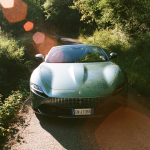
The history of the FIAT Panda Italia '90
An icon of the World Cup and the ''notti magiche'' of thirty years ago
July 31st, 2020
Garage Italia
Thirty years ago, in these times, the World Cup of Italy '90 had already been over for twenty days and the Germans - winners in the final against Argentina in Maradona - continued a summer of celebrations unaware that few months later they were supposed to celebrate something far more important than a "simple" football game: the fall of the Berlin Wall.
Italy, however, host country of that world, was continuing its period of splendor, dictated by an economic boom that seemed to have no end and representing the fourth world economic power, with Italian citizens considered among the richest in the world.
The summer of 1990 was unforgettable, with "Estate italiana" - sung by the duo Bennato-Nannini - the absolute protagonist of those magical nights that the less young still remember after thirty years.
Just in the year of the thirtieth anniversary of Italy '90, the sixtieth edition of the European championships should have started, which, coincidentally, would have started with the inaugural match in Rome. The coronavirus blew up any kind of planning and (almost) all scheduled sporting events; nevertheless, 2020 remains the year of the fortieth birthday of one of the symbols of the Italian economic renaissance: the FIAT Panda.
An icon that also became the symbol of Italy '90 due to one of the most limited series that the Turin car manufacturer has ever produced: for the occasion, the Panda was produced with a serious livery in chalk white furrowed by a tricolor line and , at the base of the rear pillar was drawn Ciao, the mascot of those world championships.
Numerous details with clearly football references: the circles reproduced a soccer ball with lots of white and black hexagons, the mask was marked with a tricolor shield and the interiors, the panels and the mats were produced in blue, in the same shade as the uniform of our national team.
Two models of the Panda were produced; the rarest, in a convertible version, was made on the S base by the Maggiora body, with the bellows of the black or beige soft top and the canvas roof in the same color and the Italia '90 logo and the mascot that occupied the doors and the rear.
It is not known exactly how many cars have been produced but one, surely, was given to Giancarlo Marocchi - former Juventus player and current commentator of Sky Sport - directly from FIAT: in fact, at the end of the Italian World Cup, the cars were withdrawn and the Turin-based company decided to give them to the 25 players of the black and white squad, personalizing them with their respective names.























